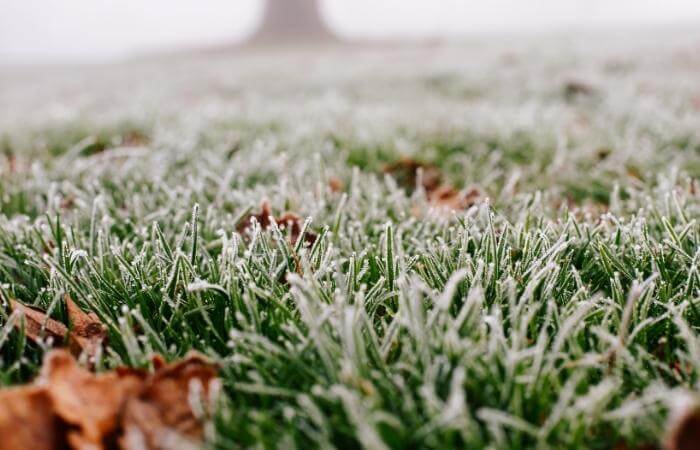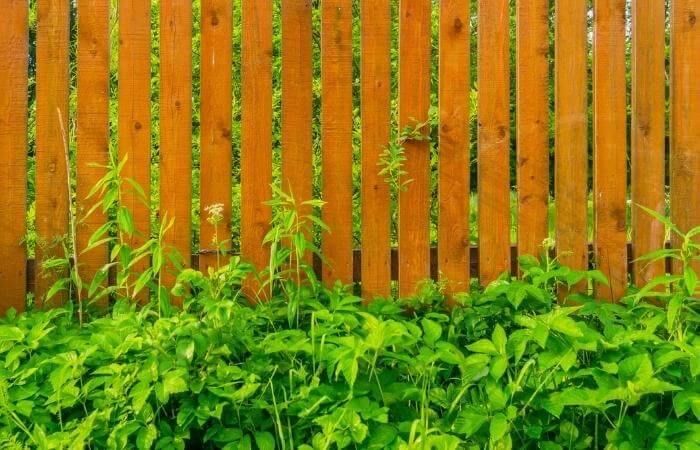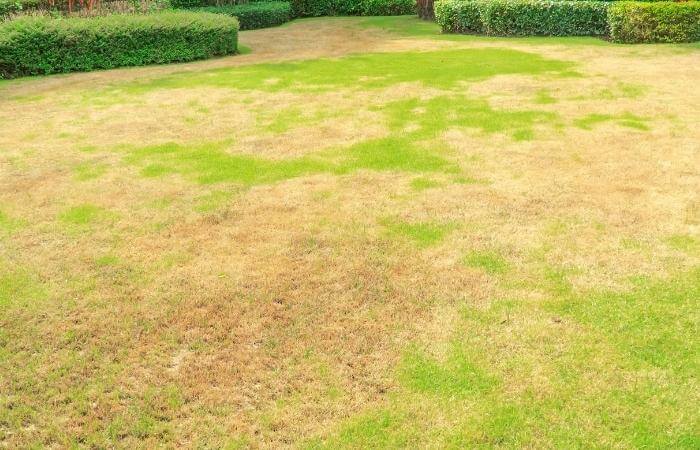New sod is beautiful, but if you want to keep your new sod healthy and help it develop a deeper root system, you must provide it with proper nutrients. The easiest way to accomplish this task is to use a quality lawn fertilizer.
To learn if and when to fertilize new sod and which type of fertilizer is best, you only need to read this guide, so you can avoid making mistakes that could ruin your investment!
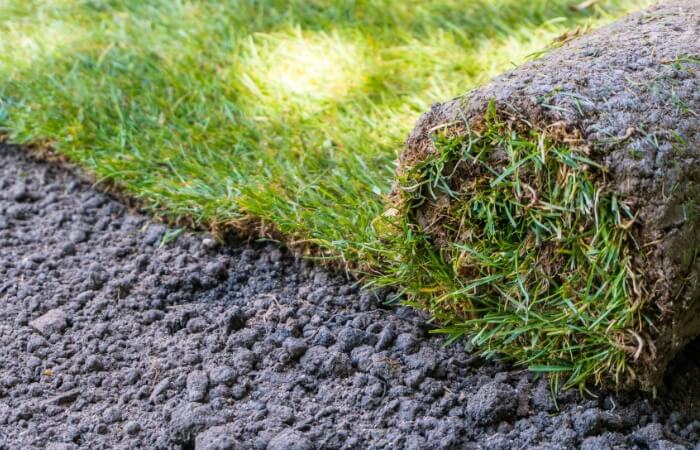
Should You Fertilize New Sod?
Yes, you absolutely need to fertilize new sod for several reasons.
The first reason is that the sod grasses have been through a traumatic experience by being dug out of the ground, rolled up or stacked into piles, transported possibly hundreds of miles, and finally tossed onto the ground and tamped back down.
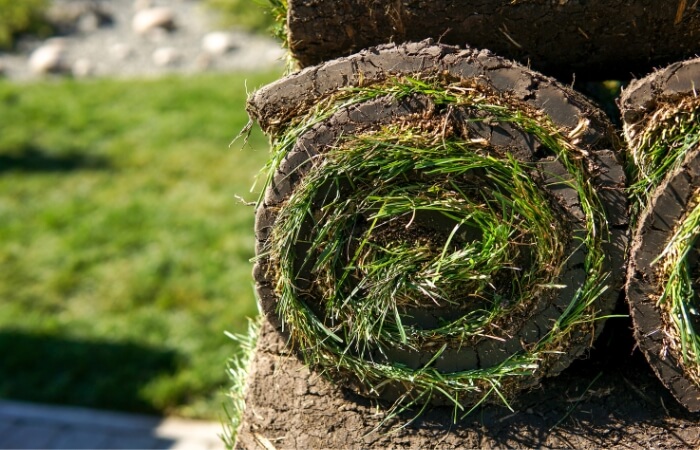
This process damages and stresses the grass blades and roots, so it’s crucial to give new sod a chance to recover with an influx of nutrients.
Another reason to fertilize new sod is to establish the lawn by allowing the root system to grow into the underlying soil. Fertilizer will aid in developing quicker root growth and spread, so the yard remains green and lush.
Lastly, a new sod fertilizer will contain the proper ingredients to fortify the grass cell structures, so pest issues or browning from drought is less likely to occur.
Once sod becomes established, it will have different nutritional needs to sustain it in good health, and at this time, you can transition to using a more standard lawn care fertilizer.
When To Fertilize New Sod
You want to apply your first dose of fertilizer to fresh sod on the day of installation and water it well.
The first fertilizer application should be light since the new sod hasn’t spread roots yet and only needs a slight energy boost to begin root establishment and keep the shoots green and firm.
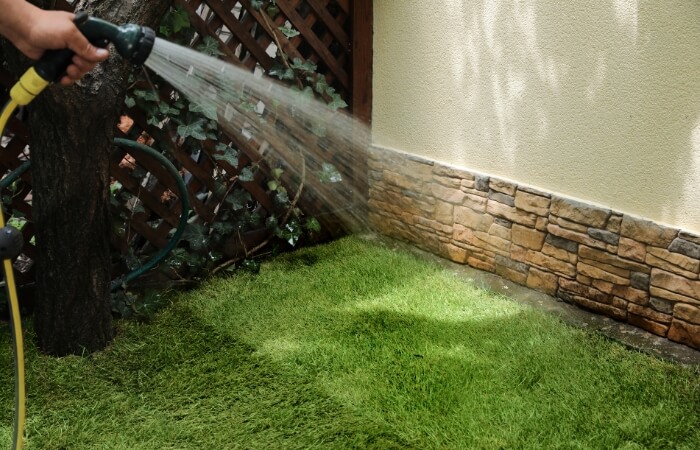
Watering new sod is very important at this stage, making it easy to spread out a specialized new sod fertilizer and have it soak down so thirsty roots can uptake the moisture and nutrients.
Don’t overwater the new sod once you spread the fertilizer, as the roots are only an inch or two under the surface. Water too much, and the nutrients will wash deep into the soil, becoming ineffective at helping the new sod grow.
After the new sod is down for four to six weeks, you’ll want to make another fertilizer application at full strength. At this time, the grass should be actively growing in both the roots and blades and will need extra nutrients to sustain rapid development.
Once you perform your first full fertilizer application on your new sod, you should follow the standard timing in your region for additional feedings throughout the rest of the year.
During the sod’s active growth stage, most lawn care experts recommend you fertilize three or four times using a slow-release blend.
The growth cycle of grass depends on the variety of the seed and the region’s local temperatures. In some locations, grass will grow actively for several more months than in others.
Ask a local lawn care professional if you’re unsure about how many times you need to fertilize. You don’t want to over-fertilize, which can be detrimental to your sod.
A standard rule of thumb is to apply fertilizer around these holidays:
- Easter/April Fool’s Day (for warmer regions)
- Memorial Day
- Labor Day
- Halloween
- Thanksgiving (a winter formulation before the first frost)
Feeding your lawn during the growing season ensures your turf will remain healthy. A slow-release granule will evenly distribute nutrients over several weeks as they slowly break down.
What Type Of Fertilizer For New Sod?
Sod is the best way to have instant gratification when you want a lush lawn and you don’t want to ruin it by applying the wrong type of fertilizer.
A new sod fertilizer should contain potassium, phosphorus, and carbon with a low level of nitrogen.
- Phosphorus is the most crucial nutrients for new sod, as it aids in root development, so your lawn builds a strong structure that will enable robust blade growth in the future.
- Potassium helps grass resist drought, disease, and cold temperatures.
- Carbon improves soil health and encourages microbes to flourish, which will help break down organic matter so roots can uptake nutrients more efficiently.
- Nitrogen aids in foliar growth, which is a vital nutrient that helps keep your lawn green and thick. You want nitrogen levels low in a new sod fertilizer because you want the grass to expend its energy on deepening the roots instead of shooting up tall blades.
To know you’re buying a fertilizer with the correct ratio of nutrients, you need to read and understand the N-P-K rating on the product. N stands for nitrogen, P is phosphorus, and K is potassium.
For example, an N-P-K ratio of 8-8-8 for the new growth stages and switch to a 16-0-4 formulation to maintain the lawn.
